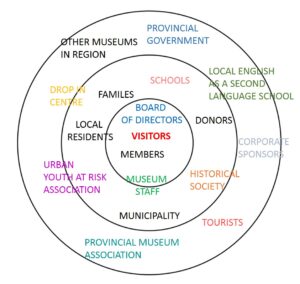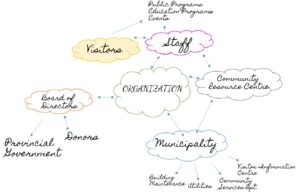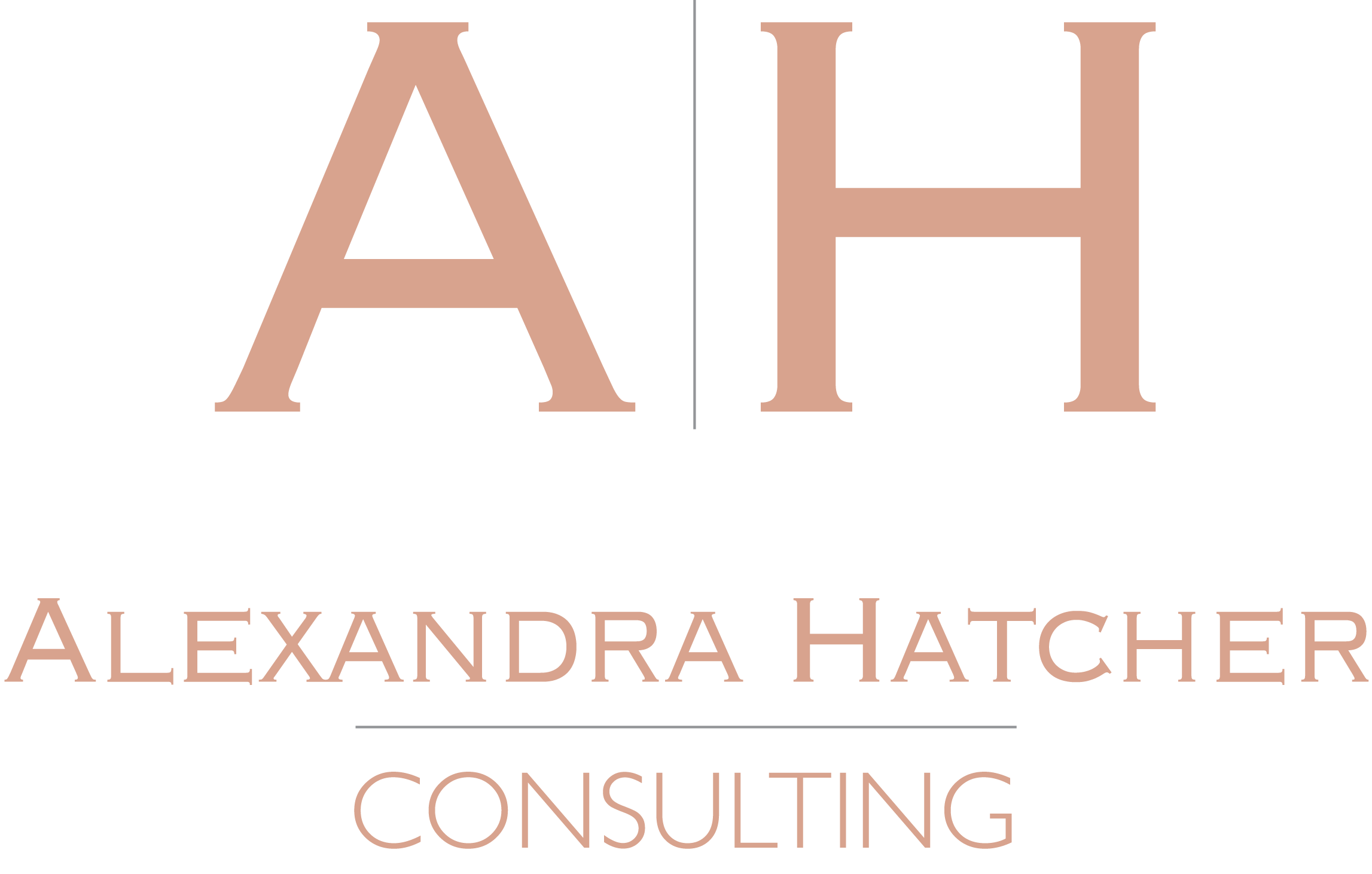One of the important aspects of developing a mindful and intentional organizational strategy is ensuring that you speak with those who influence the decisions of the organization, and those who are impacted by the decisions of the organization – your stakeholders.
Misconceptions abound regarding stakeholder consultations and the potential connection to community engagement. Let me be clear, Stakeholder Consultation is not Community Engagement.
In the Small Museums Toolkit, Candace Tangorra Matelic defines community engagement:
Community engagement involves identifying and addressing what people care about and doing things that really matter—for example, conducting activities focused on building better communities. [1]
As Matelic goes on to say, token meetings, annual visitor surveys, and consultations for research purposes, are not activities your organization can consider as actively engaging with community [2]. However, these processes can provide you with important insight in how those who interact with your organization think about its activities, its vision and direction. It can also be the first step in starting to build different types of relationships with those who have an interest in your organization’s success.
Who are your stakeholders?
Identifying the individuals, groups, and partners, that have an interest in your organization can simply start by brainstorming all of their names. There is a spectrum of relationships, from those with whom you have a close relationship, maybe even a formal partnership agreement, to loose affiliations. Include those who are at the core of what you do, your visitors, clients, program participants. Consider each area of the organization – your marketing, finance, frontline services, administration, programming. Each area will have its own list, and there will most likely be overlap with each other. It is wise to ensure that you examine the two sides of the stakeholder definition – those who are impacted by the organization, and those who influence the organization.
Don’t forget to include internal stakeholders as well. Who do you serve inside your organization? What about your Board of Directors? Your volunteers? Other staff?
There are a number of simple tools you can use to plot the relationships that each stakeholder has with your organization.
Stakeholder Mapping
Using a series of concentric circles, place the names of the stakeholders based on the type of relationship they have with your organization. Those who are core to your work would be placed at the centre, and those who have less influence, would be placed on outer circles.
This type of exercise provides you with the opportunity to examine, somewhat objectively, these relationships, and to see if you want any changes to occur. Perhaps the majority of the names are on the outer circles. Do you want them to be more engaged with the organization? Would it be beneficial to moving them in closer? Or are there too many in the centre, having a more direct effect on the way in which the organization operates? What do you need to do to address any gaps?

Power vs. Interest Grid
Another tool is the Power vs. Interest Grid. Once again, you place the names of the stakeholders based on the type of relationship they have with your organization. In this tool, there are four types of relationships to consider:
- Players: those who have both an interest and significant power;
- Subjects: those who have an interest but little power;
- Context Setters: those who have power but little direct interest; and
- Crowd: those who have little interest or power.

Look at the list of stakeholders that you have brainstormed and think about their level of interest in the organization. This should be considered not just from their level of curiosity in what you are doing, be mindful of the stakeholder’s political power base within the organization as well. Then think about the amount of power that the stakeholder has, and the sway they have over the organization’s future. Place the name of the organization on the corresponding intersection of interest (y axis) and power (x axis).
Mind Map
You can also build a more organic representation of your stakeholder relationships by creating a mind map of the connections. Start with a core relationship and draw arrows joining the organization and the stakeholders, then link the bubbles to show the different connections between stakeholders and the organization. This tool shows the balance/imbalance of relationships, and where necessary adjustments may be needed.

Follow Through
Having a clear understanding of the relationship that each stakeholder has with your organization will then impact the way in which you consult with them in the strategy development process, from providing information updates, to truly collaborating on decisions about the future of the organization. Once you know how stakeholders want to engage, act on it. Begin to involve people and organizations differently. And follow up after the meetings.
The key to successful stakeholder consultation truly is follow through. This simple action starts to build trust between the organization and the stakeholder, strengthening the relationship. This is your opportunity to build connections, nurture existing relationships, and gain a clear understanding of where gaps exist.
[1] Matelic, Candace. (2011). “Chapter Six: New Roles for Small Museums”. Small Museum Toolkit. Edited by Cinnamon Catlin-Legutko and Stacy Klinger. Nashville, TN: American Association for State and Local History, p. 145.
[2] Ibid.
